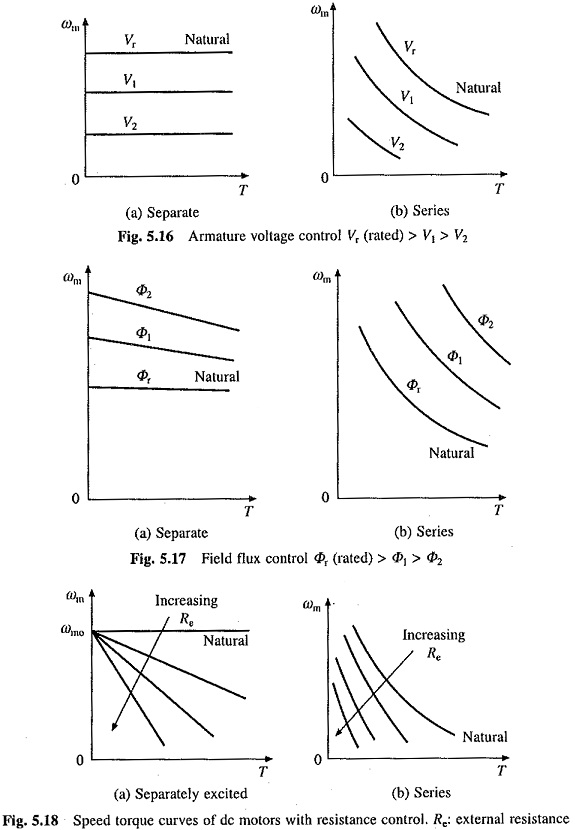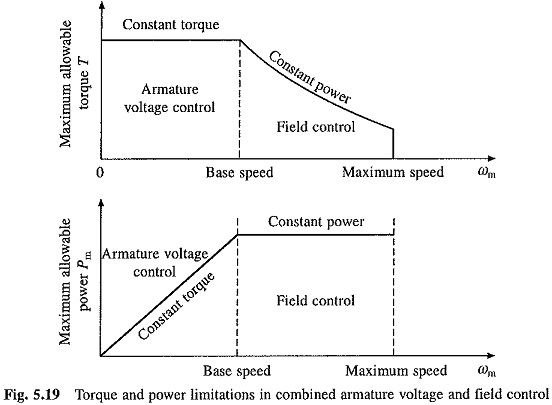Speed Control of DC Motor Drives:
The Speed Control of DC Motor Drives can be any of the following methods:
- Armature voltage control
- Field flux control
- Armature resistance control
Speed-torque curves of dc motors for these methods of speed control are shown in Figs. 5.16 to 5.18.
Armature voltage control is preferred because of high efficiency, good transient response and good speed regulation. But it can provide Speed Control of DC Motor Drives only below base (rated) speed because the armature voltage cannot be allowed to exceed rated value. For speed control above base speed, field flux control is employed.
In a normally designed motor, the maximum speed can be allowed up to twice rated speed and in specially designed machines it can be six times rated speed.
The maximum torque and power limitations of dc drives operating with armature voltage control and full field below rated speed and flux control at rated armature voltage above rated speed are shown in Fig. 5.19. In armature voltage control at full field, T ∞ Ia consequently, the maximum torque that the machine can deliver has a constant value. In the field control at rated armature voltage, Pm ∞ Ia (because E ≈ V = constant). Therefore, maximum power developed by the motor has a constant value.
In a separately excited motor, flux is controlled by varying voltage across field winding and in a series motor it is controlled either by varying number of turns in the field winding or connecting a diverter resistance across the field winding.
In armature resistance control, speed is varied by wasting power in external resistors that are connected in series with the armature. Since it is an inefficient method of Speed Control of DC Motor Drives, it was used in intermittent load applications where the duration of low speed operation forms only a small proportion of total running time, for example in traction. It has, however, been replaced by armature voltage control in all these applications.

